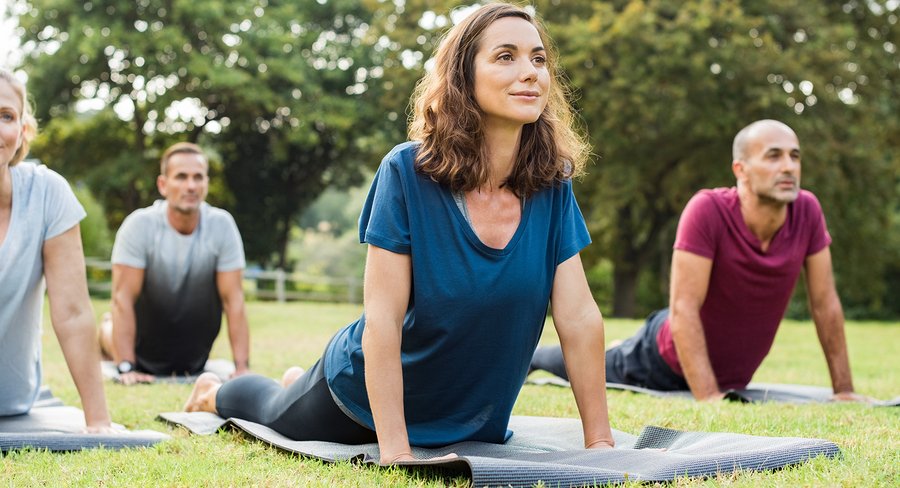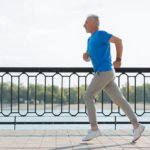Health Article Summary:
- New research suggests that regular physical activity may lower the chance of hip fractures in older women
- Hip fractures are associated with limited mobility and a range of potential complications as we age
- Exercise helps strengthen our bones and muscles, making falls less likely and reducing the odds of a fracture occurring
Less Strenuous Workouts Still Protect Aging Bones
It is not uncommon for older people who are mainly sedentary to be somewhat apprehensive about starting an exercise routine. Their worries may include not having the strength or stamina to be able to complete a workout or injuring themselves while exercising. But the good news is that raising your physical activity level will most certainly offer far more benefits than risks. In fact, new research shows that even less strenuous workouts can help protect aging bones.
The study, which was conducted at the State University of New York at Buffalo, found that among senior women, at least, regular exercise appears to lower the risk of breaking a hip.1LaMonte, Michael J.; et al. “Association of Physical Activity and Fracture Risk Among Postmenopausal Women.” JAMA Network Open. 25 October 2019. Accessed 30 October 2019. https://jamanetwork.com/journals/jamanetworkopen/fullarticle/2753526. These results are based on an investigation that included 77,206 women between the ages of 50 and 79 when the research began to examine the effects of various types of physical activity on the rate of bone fractures.
All the women were tracked for an average of 14 years beginning in the 1990s, during which time they answered questions about their lifestyle and physical activity levels. After analyzing the data, the researchers discovered that those who regularly took part in exercise had a lower risk of hip fractures than their peers who did no exercise. Those who mainly did moderate to vigorous types of workouts had a 12 percent decreased chance of fracturing a hip. But the link held no matter what intensity the subjects worked out at or what kinds of activity they chose, including for those who identified most of their exercise as coming from less intense activities such as bowling, golfing, and slow dancing.
The Dangers of Fractures as We Get Older
While breaking a bone is no fun at any age, there are additional risks for seniors. And hip fractures are far more common in that age group. In fact, according to the International Osteoporosis Foundation, the peak number of hip fractures occurs between the ages of 75 and 79, and their incidence is on the rise. Hip fractures typically entail hospitalization for several days, and frequently hip surgery is recommended afterward because it helps stabilize the bone.
Hip fractures can take a lot of time to heal and most always require extensive rehabilitation and use of an assistive device like a walker or cane. Recovery can take weeks or several months, which means the individual will have limited mobility and trouble performing everyday tasks. All of this leads to a greater risk of complications including blood clots, pressure ulcers, and pneumonia from immobility.
How Does Exercise Help Us Avoid Fractures?
Part of the benefit of physical activity lies in its ability to strengthen our bones and contribute to their density. But after approximately the age of 30, we can no longer add mass to our bones. Instead, we need to exercise from our 30s on simply to avoid losing bone density as we age. Weight bearing exercises such as walking and playing tennis are very helpful in keeping our bones strong, healthy, and less likely to break.
That’s not the entire story, though. Workouts are also important because they help strengthen the muscles in the lower body, improve balance, and promote agility. Also, additional muscle in the upper legs and hips provides extra protective padding for your hip bones if you do happen to fall—again making fractures less likely. If you’re up for some high-impact weight-bearing exercises, give hiking, jogging, or quick-tempo dancing a try. If those are too vigorous for you, take a low-impact aerobics class, go walking, or use an elliptical machine. Use resistance bands or weights to focus on strengthening your muscles, and engage in Pilates, Tai Chi, or yoga to increase your flexibility and restore balance.
References
| ↑1 | LaMonte, Michael J.; et al. “Association of Physical Activity and Fracture Risk Among Postmenopausal Women.” JAMA Network Open. 25 October 2019. Accessed 30 October 2019. https://jamanetwork.com/journals/jamanetworkopen/fullarticle/2753526. |
|---|











